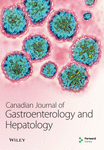Intestinal Permeability before and after Ibuprofen in Families of Children with Crohn’s Disease
Abstract
BACKGROUND: Members of a subset of first-degree relatives of adults with Crohn’s disease have been shown to have an increased baseline intestinal permeability and/or an exaggerated increase in intestinal permeability after the administration of acetylsalicylic acid.
PURPOSE: To determine intestinal permeability in unaffected first-degree relatives of children with Crohn’s disease before and after the administration of an ibuprofen challenge.
METHODS: Lactulose-mannitol ratios, a measure of intestinal permeability, were determined in 14 healthy control families (41 subjects) and 14 families with a child with Crohn’s disease (36 relatives, 14 probands) before and after ingestion of ibuprofen. An upper reference limit was defined using the control group as mean ± 2 SD.
RESULTS: The proportion of healthy, first-degree relatives with an exaggerated response to ibuprofen (20%, 95% CI 7% to 33%) was significantly higher than controls (P=0.003). The exaggerated response was more common among siblings than among parents of pediatric probands.
CONCLUSIONS: Members of a subset of first-degree relatives of children with Crohn’s disease have an exaggerated increase in intestinal permeability after ibuprofen ingestion. These findings are compatible with there being a genetic link between abnormalities of intestinal permeability and Crohn’s disease.




